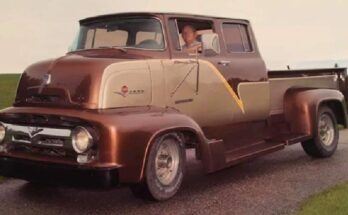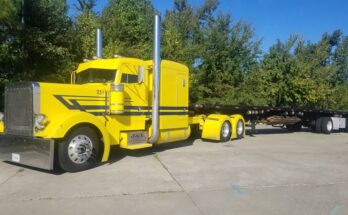My parents were born in the 1960’s, during the Space Race. I remember asking them about seeing the moon landing on TV (my dad was 8 at the time, my mother was 5). Though many people are still convinced that the moon landing was faked, plenty of us still daydream about a future where we can visit the Moon on vacation, or simply visit the International Space Station and take a look at our world from a distance. Whatever really happened, what the Space Race did do was inspire a generation of designers who began sketching their plans for the next line of vehicles. Ford decided to use the Space Race to get people excited for their new cars, which were aptly called Galaxie, which became popular not only in the United States, but also Brazil and Australia.
While there isn’t a lot about the Galaxie that would remind one of a spaceship right off the bat, the stainless steel/chrome covered outside, the lean lines, and length do bring to mind the dimensions and exterior of a spaceship. Otherwise, however, it was like many other cars of the era, with a huge steering wheel, optional seatbelts, and a two-tone paint job (at least for the first generation) that spoke to the desire for luxury, richness, and the American dream. Its main competitor was the Chevy Impala, which would later become an important vehicle in pop culture due to the popularity of CW’s Supernatural.
Throughout the years, the Galaxie was almost as popular as the Ford Model T, even after going through several iterations that greatly changed its look, from removing the tailfins to minimizing the front design. Eventually, Ford decided it was time to phase the Galaxie out. In the mid-1970’s, the Space Race hopes and dreams had faded somewhat, and it was time for something new, something practical, something earthbound. It was replaced by the Ford LTD, which was itself later replaced by the Crown Victoria and Taurus models.
It remains to be seen whether we’ll have another age of space exploration or if we’re too busy with trying to patch things up on Earth to think about what lies beyond the stars. I hope that one day, we get another chance to see what’s out there, and watch how that trickles down and inspires a new generation of designers, architects, and artists. Maybe the next car inspired by spacecraft will be a flying car – or at least one that can navigate by star charts, drive itself to the desired destination, or suspend the driver and passengers in zero gravity.
If you want to learn more about the Ford Galaxie, its history, or the specifications of various models over the generations, you can find a great deal of helpful information at the Ford Galaxie Wikipedia page. Of course, if you’re leaning more toward purchasing one of these beauties, you can find pricing information and sale listings on websites like Auto Trader and Classic Cars.


